First person to guess in the comments what color nail polish I'm wearing wins a code to get the new National Geographic Field Guide app for the iPhone. (You can either guess the color name or what the color actually is. HINT: It's from the Skyfall Collection of nail polish). I've long been a fan of National Geographic. They were my preferred field guide when I was a kid and way back before we were iPhone and Android crazy and they were one of the first when they had the idea of putting their field guide on a Palm Pilot. Now there's a blast from my blog's past! That's a blog entry I wrote over seven years ago...yikes, how long have I been doing this?
As field guides are establishing themselves firmly on the smartphone train, National Geographic released their iPhone app a few years ago. I was disappointed. The illustrations were there, but as an iPhone app, it wasn't very intuitive, didn't do what most of the other apps did. It was as if someone did a hasty job of taking the Palm Pilot version and wedged into an iPhone app and had the same results that a woman who wears a size eight shoe has when she tries to wear six six high heels. You get the idea, but it's uncomfortable.
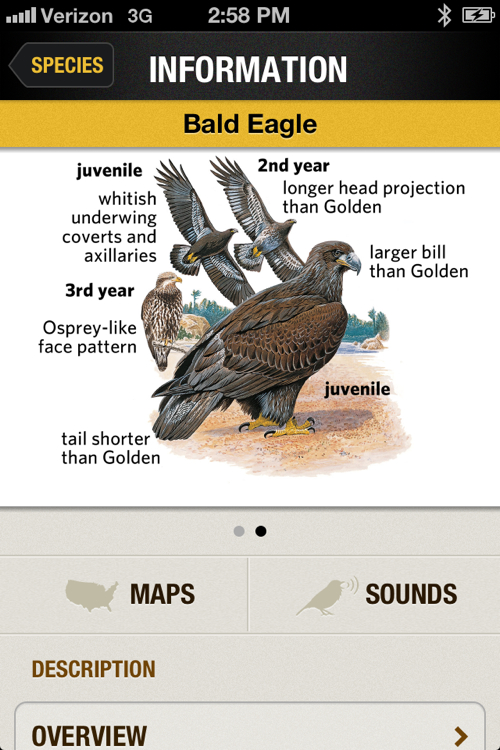
There is a new version! If you already bought the app and like me took it off your phone and it's been collecting dust in iTunes, update that bad boy right now and reinstall to get the new version. If you are a fan of National Geographic illustrations, you'll enjoy this app. It has all the images from the book and includes songs and calls for each species (as well as a sonogram). You get the text of where to find the birds, their behavior, field marks--everything you want in a field guide.
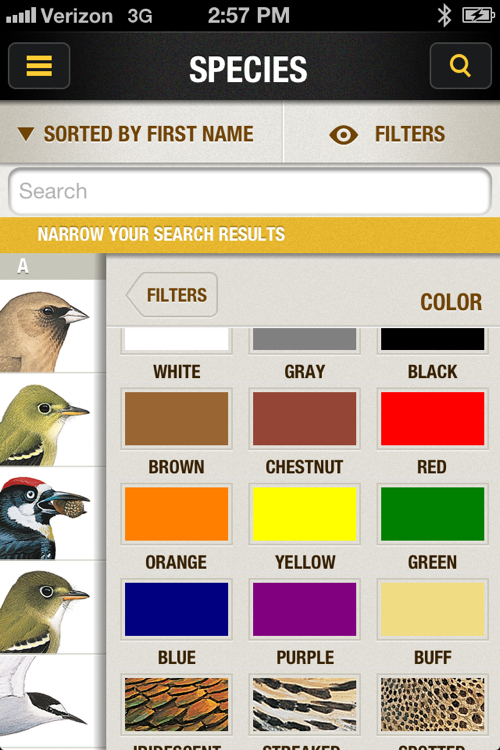
If you see a bird and you don't know what it is, you can filter your search in the guide by color, size, range and time of year to narrow down your list of possibilities. Man, remember when we first started birding and if we saw a small brown bird we had to sift through a field guide and try to figure out the difference between a female finch and a sparrow?
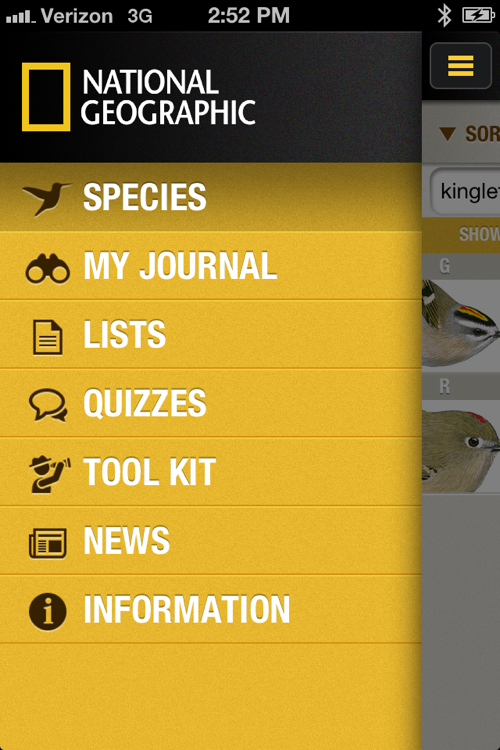
Now, this app comes with a price--it's HUGE! In the field, Sibley may be one of the heavies, but in app form he's only 446.7 MB. National Geographic has him beat at 880.9 MB (still not quite as big as Audubon's 924.3 MB). I had to remove some apps on my phone to get this app to fit. Not only is this a guide, but you also get articles on how to watch birds, how to choose binoculars, listing capability (including mapping your location) and creating field notes. Also included are some high definition videos which I think contributes to the app's large size, but hey, if you are jonesing to see and hear a bobolink...the app can help you out by showing a video.
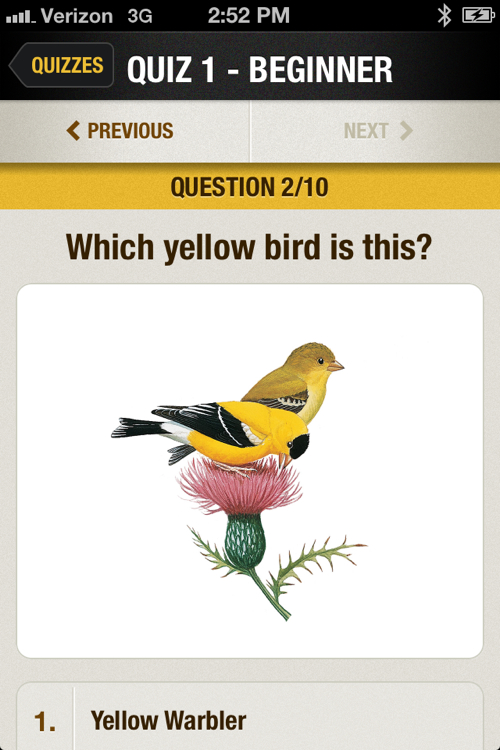
I think my favorite feature on this app are the quizzes! You have three levels: Beginner, Intermediate and Expert. The Beginner Level might play a song or show a picture and give you choices to id the singer or illustration.
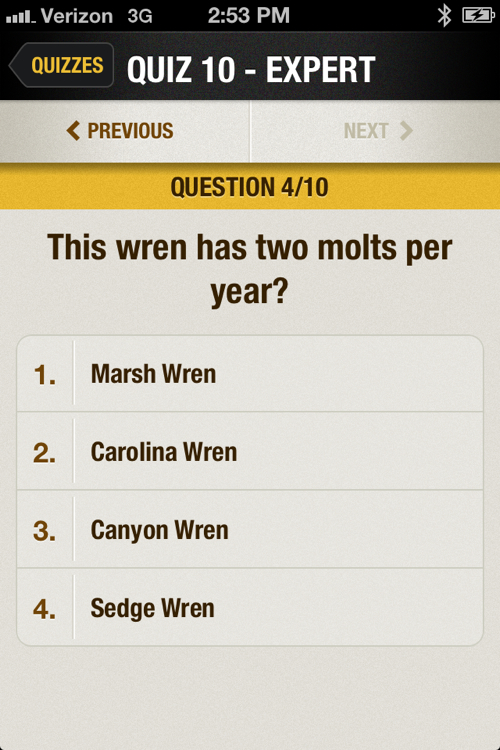
The expert level...well, it challenges you. I only got 7 out of 10 questions correct on level 10 and more than three were guesses on my part. But I like an app that encourages me to learn from it. So, this is a vast improvement to the old National Geographic. It doesn't have the comparison feature that I do appreciate on the Sibley app but the other features more than make up for it.
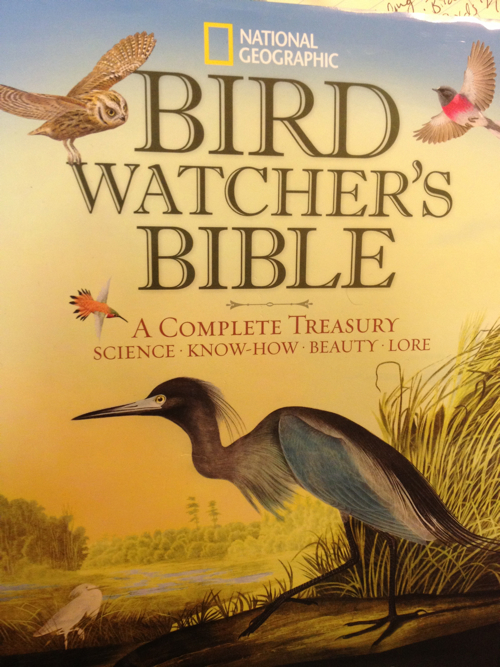
Now, if you are staunchly in the Luddite category and have had enough of the app business...check out the new National Geographic Bird Watcher's Bible. This book is not for the hardcore birder. It's a great kind of intro book for someone who is casually interested in birds. Maybe even a kid who is into the old form school of reading books.
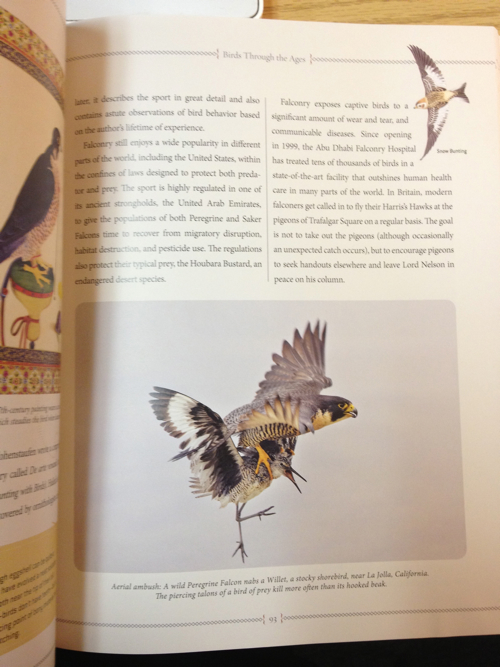
The book uses a combination of great photos (check out that shot of a peregrine falcon nailing a willet) and National Geographic illustrations (cause hey, they own the rights and they can be good filler) to give you an eye catching book with fun factoids like,"Only 29 birds that regularly breed in North America have one-word names."
The book covers a little of everything from bird anatomy, history, migration, how to be a birders and I must say, even includes a mention of the Internet. I would have loved this book when I was a kid and I would give this book as a gift if one of Non Birding Bill's friends told me, "Hey, I noticed this bird once, what is it?"
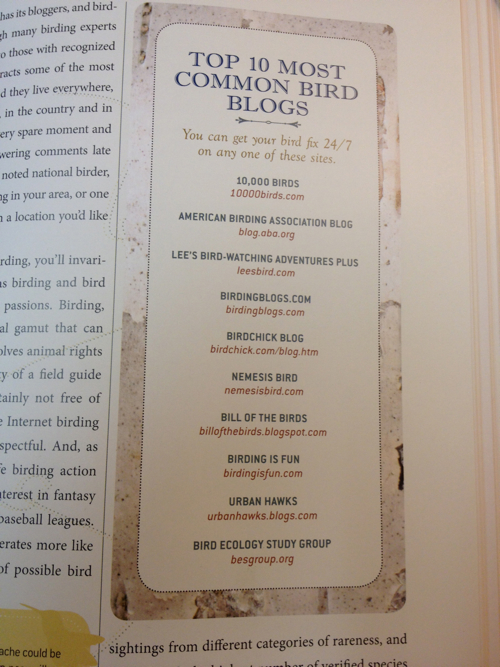
The book even includes a list of "Most Common Bird Blogs," not the best, not the most read, not the oldest or most prolific...the most common. Regardless of how they phrase it, I'm honored to have my blog included in that list among some of my favorite people like 10,000 Birds, Nemesis Bird and Birding is Fun.
